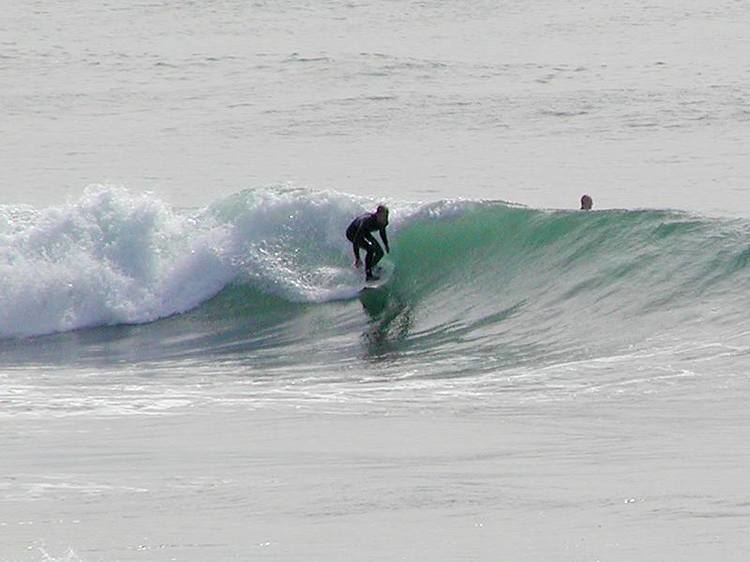 | ||
In fluid dynamics, wave shoaling is the effect by which surface waves entering shallower water change in wave height. It is caused by the fact that the group velocity, which is also the wave-energy transport velocity, changes with water depth. Under stationary conditions, a decrease in transport speed must be compensated by an increase in energy density in order to maintain a constant energy flux. Shoaling waves will also exhibit a reduction in wavelength while the frequency remains constant.
Contents
In shallow water and parallel depth contours, non-breaking waves will increase in wave height as the wave packet enters shallower water. This is particularly evident for tsunamis as they wax in height when approaching a coastline, with devastating results.
Wave shoaling
For non-breaking waves, the energy flux associated with the wave motion, which is the product of the wave energy density with the group velocity, between two wave rays is a conserved quantity (i.e. a constant when following the energy of a wave packet from one location to another). Under stationary conditions the total energy transport must be constant along the wave ray – as first shown by William Burnside in 1915:
where
For shallow water, when the wavelength is much larger than the water depth, wave shoaling satisfies Green's law:
with
Refraction effects
Following Phillips (1977) and Mei (1989), denote the phase of a wave ray as
The local wave number vector is the gradient of the phase function,
and the angular frequency is proportional to its local rate of change,
Simplifying to one dimension and cross-differentiating it is now easily seen that the above definitions indicate simply that the rate of change of wavenumber is balanced by the convergence of the frequency along a ray;
Assuming stationary conditions (
dictates that
i.e., a steady increase in k (decrease in
